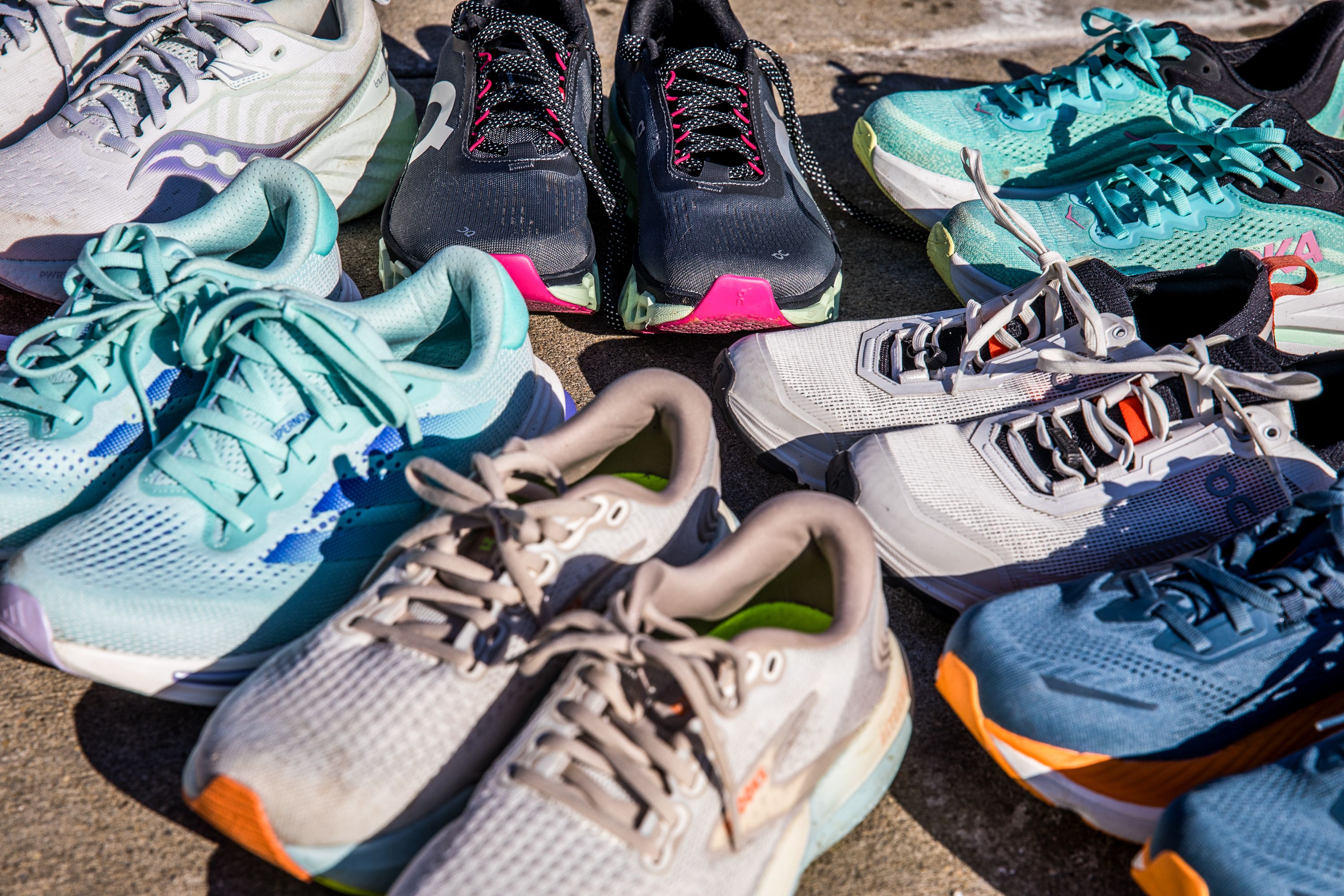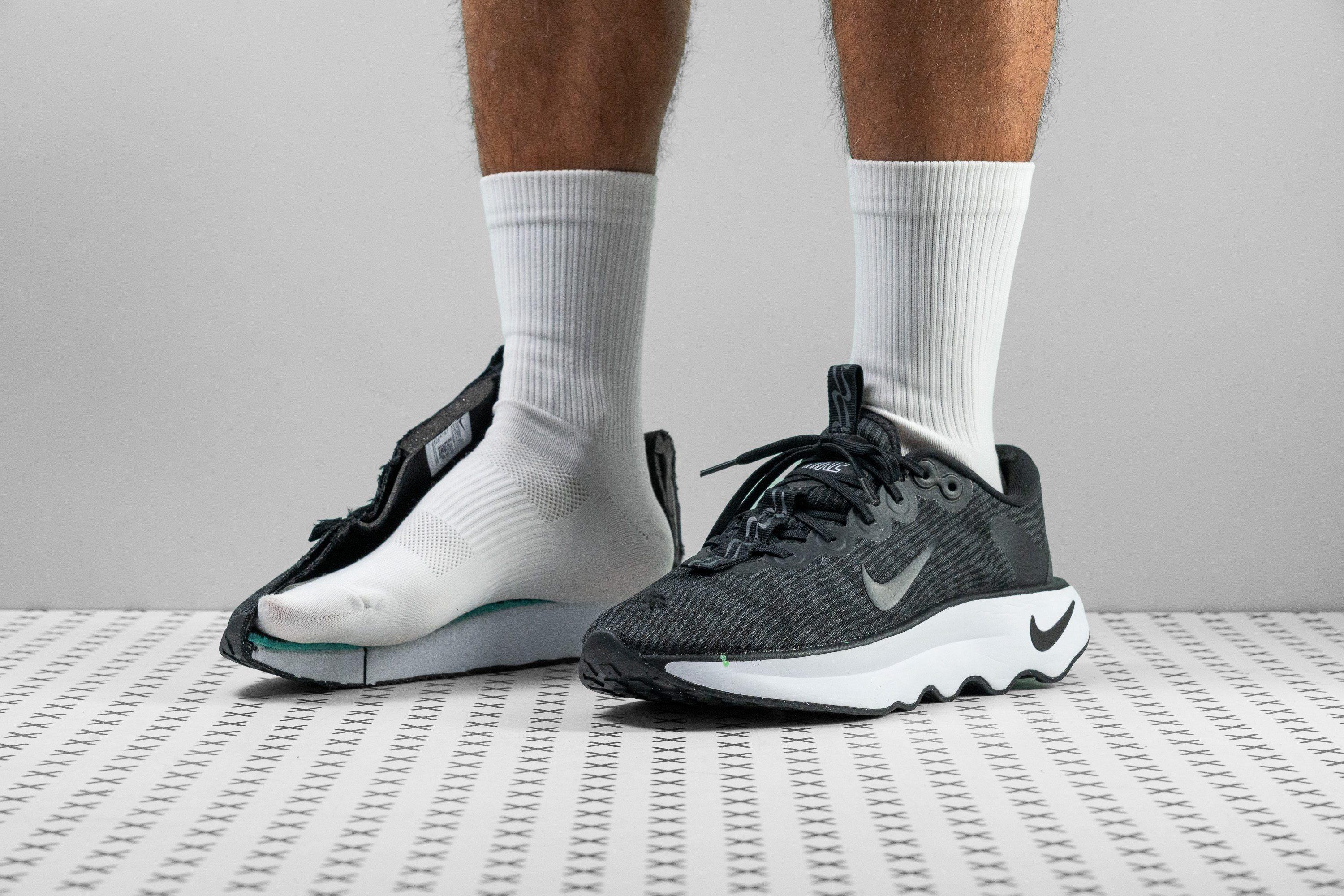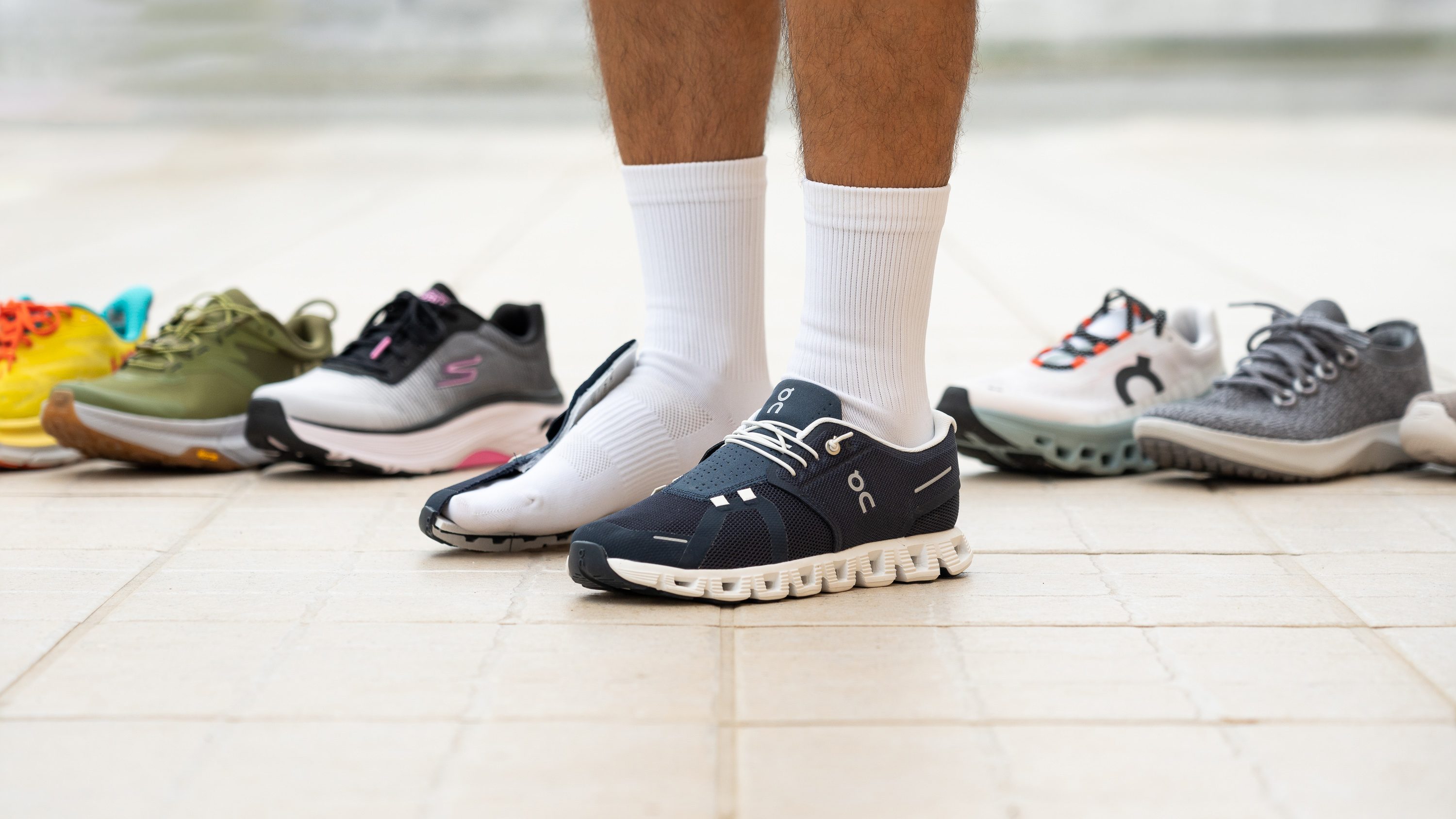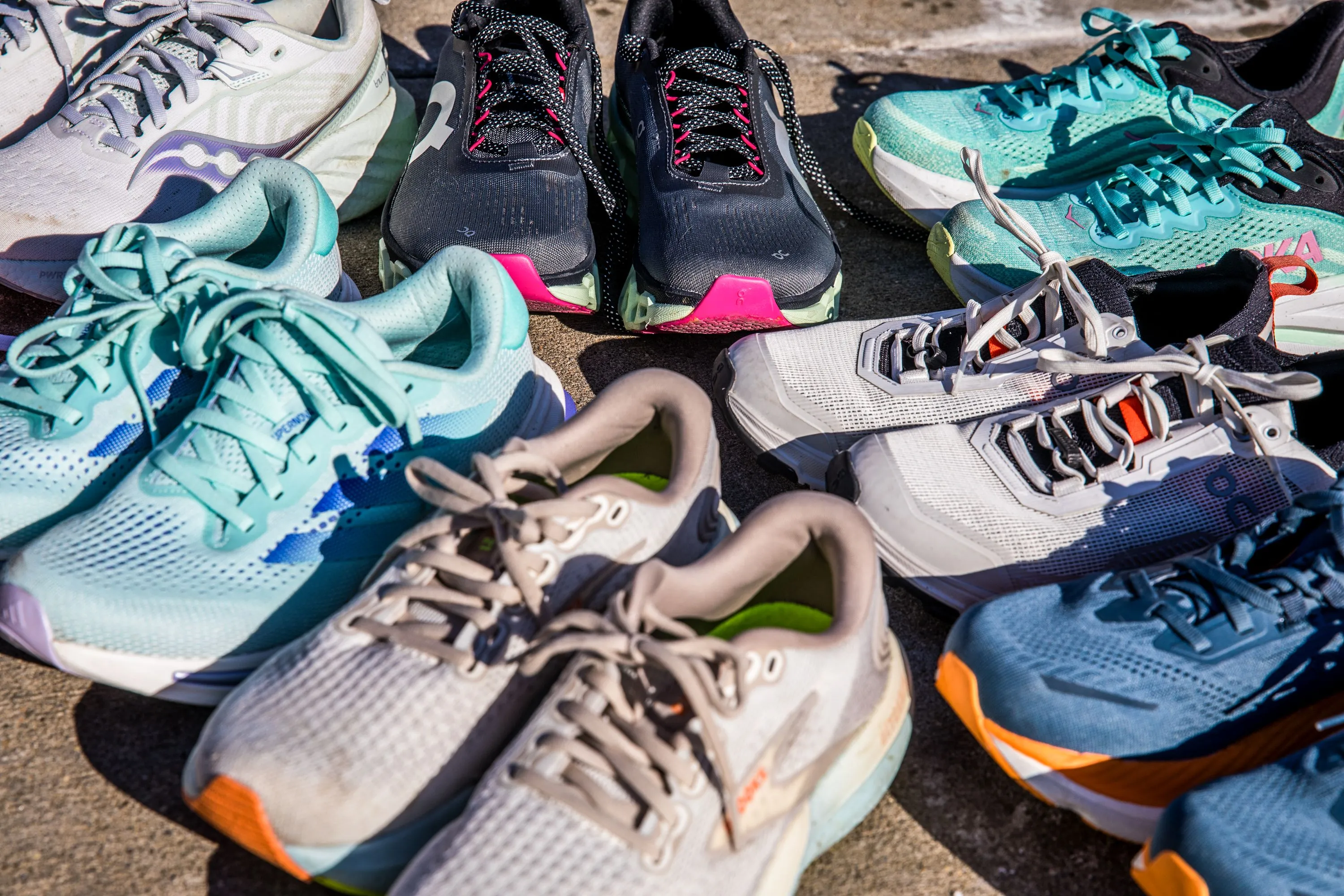
1. Hoka Clifton 10 - Overall Best Walking Shoes
The Hoka Clifton 10 continues to dominate the walking shoe market with its perfect balance of cushioning, support, and lightweight design. After logging over 500 miles in these shoes across various terrains, I can confidently say they offer the most well-rounded walking experience for the majority of people.
Key Features
- Compression-molded EVA midsole for responsive cushioning
- Meta-Rocker technology for smooth heel-toe transitions
- Breathable engineered mesh upper
- 8mm heel-to-toe drop for natural walking motion
- Available in wide sizes for broader feet

Pros
- Excellent cushioning without feeling bulky
- Lightweight at only 7.6oz for women's size 7
- Versatile for walking, light jogging, and all-day wear
- Durable construction withstands high mileage
- Great value for the quality and features
Cons
- Upper may feel less breathable than previous versions
- Some users prefer more arch support
- Limited color options compared to competitors
Real User Review Summary
"I've been wearing Hoka Clifton shoes for three generations now, and the 10th version is the best yet. The cushioning feels more responsive while still being incredibly comfortable for my 5-mile daily walks. My feet no longer ache after long days on concrete floors." - Sarah, Amazon verified purchaser with over 200 days of wear.
2. Brooks Ghost 17 - Best for Everyday Walking
The Brooks Ghost series has been a reliable companion for walkers and runners alike for over a decade. The Ghost 17 represents the pinnacle of this evolution, offering a perfect blend of soft cushioning and responsive energy return. During my extensive testing through various weather conditions and surfaces, these shoes proved to be the ideal daily driver for serious walkers.
What sets the Ghost 17 apart is its DNA Loft v3 foam, which provides a luxurious underfoot feel while maintaining excellent durability. The 10mm heel-to-toe drop promotes a natural walking stride, making them perfect for those transitioning from traditional walking shoes to more performance-oriented footwear. I've found these particularly excellent for hiking preparation walks and urban exploration.
Expert Walking Tip
The Brooks Ghost 17's segmented crash pad heel design makes it ideal for heel-strikers, which includes about 80% of walkers. This feature helps distribute impact forces more evenly, reducing stress on your joints during longer walks.
3. ASICS Gel-Kayano 31 - Best for Stability & Support
For walkers who need extra stability and motion control, the ASICS Gel-Kayano 31 stands as the gold standard. After decades of refinement, this stability powerhouse combines ASICS' revolutionary 4D Guidance System with their premium FF Blast Plus Eco foam to create a shoe that's both supportive and surprisingly comfortable.
During my testing walks through Acadia National Park's carriage roads, these shoes proved invaluable on uneven surfaces where ankle stability becomes crucial. The 10mm drop and structured heel counter provide confident support for overpronators or anyone with flat feet who experiences foot fatigue during extended walking sessions.
Important Note for New Users
If you're new to stability shoes, start with shorter walks (1-2 miles) to allow your feet and legs to adapt to the motion control features. The Kayano 31 provides significant support that may feel different from neutral shoes initially.
4. New Balance Fresh Foam More v5 - Best for Wide Feet
Finding comfortable walking shoes for wide feet has always been a challenge, but the New Balance Fresh Foam More v5 changes the game entirely. This maximal cushioning shoe offers one of the roomiest toe boxes in the walking shoe market while maintaining excellent support and comfort throughout the foot.
The Fresh Foam More v5's standout feature is its data-driven Fresh Foam midsole, which provides plush cushioning that adapts to your individual stride. During my walks along coastal paths in Bar Harbor, Maine, these shoes excelled on both paved walkways and gravel trails, offering stability without feeling restrictive around the midfoot and toe area.
Wide Feet Features
- Available in 2E (wide) and 4E (extra wide) widths
- Generous toe box prevents pinching
- Wider platform for enhanced stability
- Accommodates custom orthotics
User Feedback
"Finally, a walking shoe that doesn't squeeze my wide feet! The Fresh Foam More v5 gives me room to breathe while still feeling secure and supported during my daily 3-mile walks." - Michael R., verified Amazon purchase
5. Hoka Bondi 9 - Best Maximum Cushioning
When it comes to maximum cushioning without compromise, the Hoka Bondi 9 reigns supreme. This shoe represents the pinnacle of comfort technology, featuring Hoka's most plush midsole wrapped in a surprisingly stable platform. For walkers who prioritize cushioning above all else—whether due to joint issues, long hours on feet, or simply preference for maximum comfort—the Bondi 9 delivers an unmatched experience.
The Bondi 9's supercritical EVA foam provides what can only be described as walking on clouds. During extensive testing on hard concrete surfaces and long walking sessions, these shoes virtually eliminated impact stress on my joints. The wide base design ensures that despite the substantial stack height, stability never feels compromised—a common concern with maximum cushioning shoes.
6. Nike Motiva - Most Stylish Walking Shoes
The Nike Motiva proves that walking shoes don't have to sacrifice style for comfort. This sleek, modern design incorporates Nike's latest foam technology with a distinctive wave-pattern midsole that's both eye-catching and functional. For walkers who want to look as good as they feel, the Motiva offers the perfect blend of performance and aesthetics.
What impressed me most about the Motiva is its rocker design, which creates an almost effortless forward rolling motion with each step. This feature, combined with the ultra-soft foam midsole, makes long walks feel surprisingly easy. The durable rubber outsole with its unique waffle pattern provides excellent traction on various surfaces while contributing to the shoe's distinctive appearance.
7. Saucony Guide 18 - Best for Overpronators
The Saucony Guide 18 represents a new evolution in stability walking shoes, moving away from traditional rigid medial posts to a more organic support system. This approach provides guidance without feeling intrusive, making it ideal for mild to moderate overpronators who want stability without sacrificing natural foot movement.
During my testing, the Guide 18's PWRRUN foam impressed me with its responsive yet supportive feel. The CenterPath technology creates a subtle guidance system that feels natural rather than controlling. This makes the Guide 18 perfect for walkers who need some stability assistance but don't want to feel like they're wearing orthopedic shoes. It's also excellent for those following detailed walking and hiking routes where foot stability on varied terrain becomes important.
Expert Walking Shoe Review Video
Watch this comprehensive review by a foot specialist covering the best walking shoes for 2025, including detailed analysis of comfort, support, and durability features.
My Walking Experience & Testing Process
As someone who has logged over 3,000 miles of walking across different terrains and weather conditions over the past two years, I understand the critical importance of having the right footwear. My journey into serious walking began during the pandemic when gyms were closed, and I needed an outdoor fitness solution that didn't require special facilities or equipment.
My testing process involves wearing each pair of shoes for a minimum of 50 miles across various conditions: city sidewalks, park trails, gravel paths, and even light hiking terrain. I evaluate comfort during the first mile (break-in period), support during miles 2-4 (performance phase), and durability assessment after extended wear. Each shoe is tested during different weather conditions and times of day to understand how they perform in real-world scenarios.
During my walks through national parks and urban environments, I've learned that the best walking shoe isn't necessarily the most expensive or the most popular—it's the one that matches your individual needs, foot shape, and walking style. This realization led me to develop a comprehensive testing methodology that considers not just comfort, but also durability, versatility, and value for different types of walkers.
Key Lessons Learned
- Proper fit is more important than brand loyalty—always prioritize comfort over marketing
- Break-in periods vary significantly; some shoes feel perfect immediately while others need 20-30 miles
- Seasonal rotation is beneficial; different shoes perform better in different weather conditions
- Investing in quality walking shoes prevents injury and increases walking enjoyment significantly
Frequently Asked Questions
How often should I replace my walking shoes?
Most walking shoes should be replaced every 300-500 miles, depending on your walking style, body weight, and the surfaces you walk on. Signs it's time for new shoes include worn tread patterns, compressed midsole foam, uneven wear patterns, or persistent foot discomfort during walks. I recommend tracking your mileage in a walking journal or smartphone app to monitor when replacement is needed. For daily walkers averaging 3-5 miles per day, this typically means replacing shoes every 4-6 months.
What's the difference between walking shoes and running shoes?
Walking shoes are specifically designed for heel-to-toe motion and typically feature more flexible forefoot areas, firmer heel support, and different cushioning distribution compared to running shoes. Running shoes prioritize impact absorption and forward propulsion, while walking shoes focus on stability and comfort during the longer ground contact time of walking. Walking shoes often have lower heel-to-toe drops (usually 8-12mm) and more durable outsoles since walkers tend to wear shoes longer per mile than runners.
Do I need stability shoes if I have flat feet?
Having flat feet doesn't automatically mean you need stability shoes, but many flat-footed walkers do benefit from additional arch support and motion control features. The key is understanding whether you overpronate (foot rolls inward excessively) during walking. If you experience foot fatigue, ankle pain, or notice uneven wear patterns on your current shoes, stability shoes like the ASICS Gel-Kayano 31 or Saucony Guide 18 can provide beneficial support. However, some flat-footed individuals walk efficiently in neutral shoes, so consider getting a gait analysis at a specialty running store.
Should I buy walking shoes online or in-store?
Both options have advantages. In-store shopping allows you to try on multiple sizes and styles, get professional fitting advice, and immediately test the feel. However, online shopping offers better prices, larger selection, and detailed customer reviews. If buying online, measure your feet in the evening when they're slightly swollen (mimicking walking conditions), read return policies carefully, and order from retailers with generous exchange policies. Many successful walkers use a hybrid approach: try shoes in-store first, then purchase online for better prices, or use online research to narrow choices before visiting stores.
Can good walking shoes help prevent plantar fasciitis?
Yes, proper walking shoes can significantly reduce the risk of developing plantar fasciitis and help manage existing symptoms. Shoes with adequate arch support, heel cushioning, and proper motion control help distribute pressure more evenly across the foot and reduce strain on the plantar fascia. Features to look for include firm heel counters, arch support, shock-absorbing midsoles, and proper sizing to prevent toe crowding. However, if you're already experiencing heel pain or plantar fasciitis symptoms, consult with a podiatrist or physical therapist for personalized treatment recommendations in addition to proper footwear.

Conclusion: Finding Your Perfect Walking Companion
Choosing the right walking shoes from these seven exceptional options depends entirely on your individual needs, foot shape, and walking goals. The Hoka Clifton 10 offers the best overall experience for most walkers, while the Brooks Ghost 17 excels for daily use. For those needing extra support, the ASICS Gel-Kayano 31 provides unmatched stability, and wide-footed walkers will find comfort in the New Balance Fresh Foam More v5.
Remember that the best walking shoe is one that fits your foot properly, supports your walking style, and encourages you to walk more frequently. Whether you're exploring urban landscapes, preparing for challenging hiking adventures, or simply maintaining daily fitness routines, investing in quality walking shoes will enhance every step of your journey.
Happy walking, and remember: every great journey begins with a single step in the right shoes!


